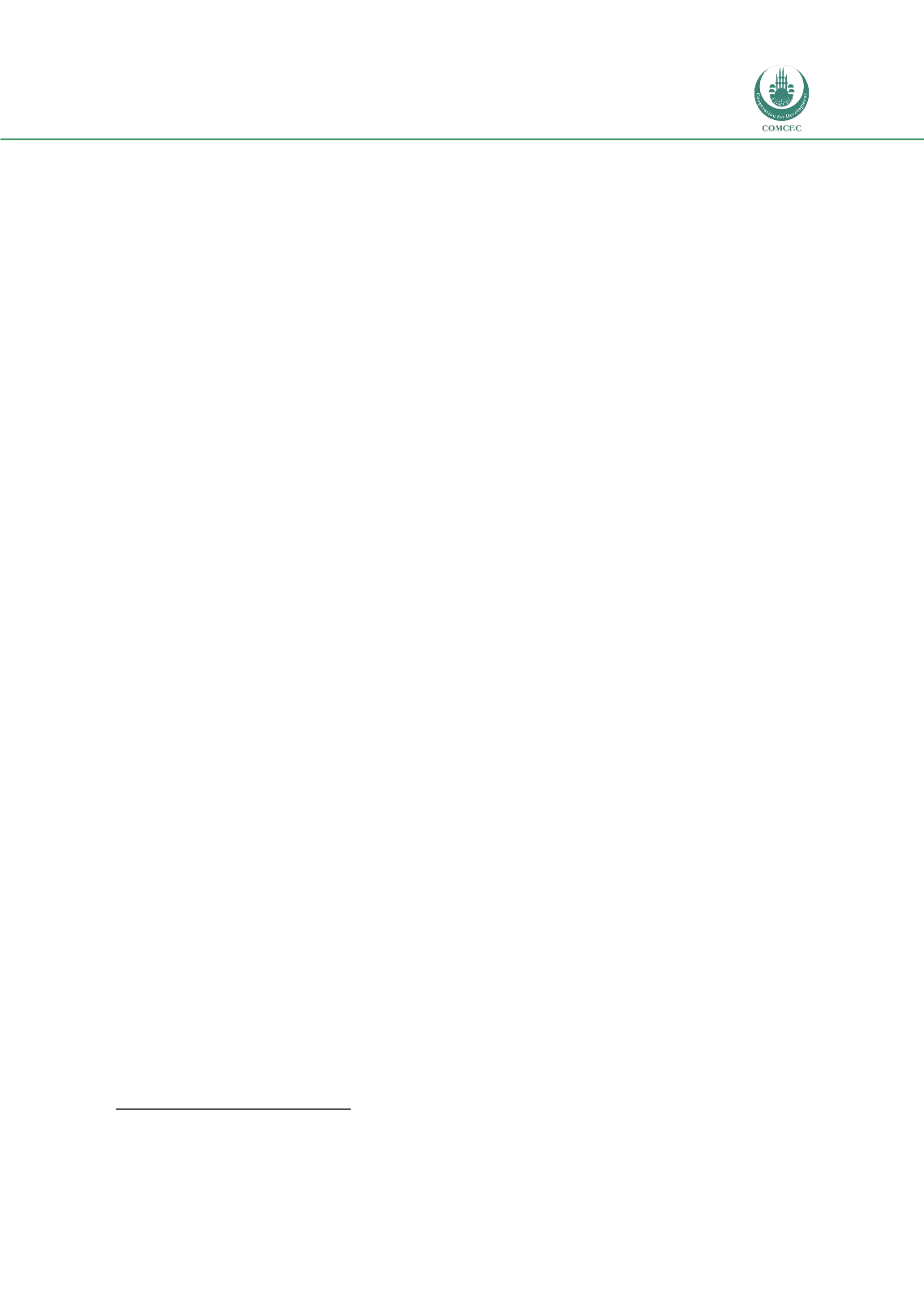

Facilitating Smallholder Farmers’ Market Access
In the OIC Member Countries
123
I
NNOVATIVE MODELS FOR PROVIDING FINANCING TO FARMERS
197
Innovations are needed to permit more flexible forms of agricultural lending while
guaranteeing that borrowers repay. A recent study by the IFC points out that many
innovations in agricultural financing exist, but they are not widely known and have not
been monitored and evaluated systematically.
198
The sections that follow describe some of
the models identified in the IFC report.
The appropriate type of agricultural financing and financing models will differ across OIC
member countries depending on the enabling environment. The relevance of different
financing models will also vary within countries based on the type of crop produced (for
example, an export crop versus a staple) and the characteristics of farmers.
Direct smallholder financing.
Several innovations have been tested to help commercial
banks reduce the risk of lending directly to farmers. In Kenya, lending to smallholders by a
commercial bank was supported by a first-loss guarantee provided by donors. Equity
Bank’s smallholder financing product—Kilimo Biashara (“agribusiness”)—is designed to
make financing available for 2.5 million farmers and 15,000 agricultural input retail
businesses in rural areas. Equity Bank enhances the security of its loans by capping loan
exposure at US$ 17,000 per farmer; applying group lending terms, whereby six farmers
act as co-guarantors; and reducing the cash amounts in farmers’ hands (for example,
farmers can pay agro-dealers out of their Kilimo Biashara credit). Technical assistance for
farmers in financial literacy and farm management, provided by the government extension
service bureau, was instrumental to the program’s success.
Indirect lending through farmer-based organizations and cooperatives.
In this model,
also known as a wholesale model, a bank lends indirectly to smallholders through an
aggregator organization, such as a farmer-based organization or cooperative. Because the
entire group is the borrower, group members act as guarantors for one other, and the
costs of assessing creditworthiness and administering loans are lower for the bank. The
security of the model can be enhanced by requiring the organization to meet a cash
collateral requirement instead of demanding traditional collateral or claims on harvest
proceeds from the individual farmers. Another means of enhancing security is for the bank
to manage the credits directly with input suppliers to reduce the amounts of cash
disbursed directly to farmers.
Input financing linked to savings accounts.
In Tanzania, the National Microfinance
Bank’s Kilimo Account product is designed to help farmers manage credit and collateral. A
farmer opens a personal savings account at the National Microfinance Bank and then
applies for a Kilimo Account (a loan account). After harvest, the farmer deposits part of the
harvest proceeds in the Kilimo Account, which is then used as cash collateral for input
financing in the following season. The success of this model derives from its strong checks
and balances, which prevent farmers from “gaming” the system. The checks include “know
your customer” signals, such as requirements for customers to supply references or proof
197
This section draws heavily on IFC (2012).
198
IFC (2012).

















